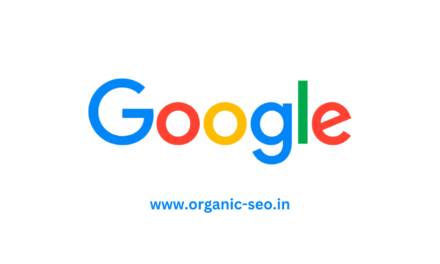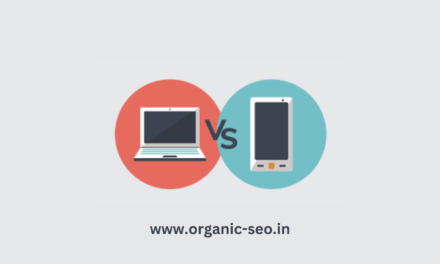In the ever-evolving world of search engine optimization (SEO), staying ahead of the curve is crucial for digital success. As the end of the year approaches, we have brought you the top 10 SEO trends that promise to reshape the way businesses approach their online presence.
1. Voice Search Optimization: Voice search continues to gain momentum with the increasing popularity of voice-activated devices and virtual assistants. Optimizing your content for voice search queries is now essential. Long-tail keywords consist of longer and more specific phrases, rendering them more likely to be employed in voice searches. By emphasizing natural language, discerning user intent and incorporating long-tail keywords, you can craft content that stands a greater chance of featuring in voice search results. Google has recently introduced LaMDA- a machine-learning model tailored for dialogue. LaMDA wants to have a conversation with the users and provide results based on what users feed it. It can even predict the next words in a conversation.
2. Mobile-First Indexing: Google’s mobile-first indexing means that the mobile version of your website is considered the primary version for ranking and indexing. The process of optimizing your website for mobile devices consists of tailoring the content, design and functionality of the site to cater to the preferences and needs of mobile users. Also, the need to ensure that your website is characterized by speed and security, as these factors play a key role in your rankings.
3. Growing importance of semantically related keywords: Over time, Google’s algorithms have evolved significantly, incorporating a more sophisticated understanding of search queries. Concepts like related keywords, search intent and semantics now shape what we see on Search Engine Results Pages (SERPs). Google unveiled the Multitask Unified Model (MUM) recently which is an AI that can discern emotions and intent from search queries across more than 75 languages. So, gone are the days when search engines relied solely on text strings for matching. Search is now entering an era of greater intuition and relevance than ever before. Instead of focusing on single keywords, consider topic clusters. Incorporate phrases and semantically related keywords to enhance your content’s resonance with your target audience. Shift your keyword research approach by thinking from the searcher’s perspective, generating keyword combinations that truly connect with your audience.
4. Structured Data and Schema Markup: Schema markup helps search engines understand the context of your content. Implementing structured data can result in rich snippets and better visibility in search results. It’s especially beneficial for local businesses and e-commerce websites.
5. Rise of the featured snippets: Featured snippets are boxes appearing above regular search results, offering quick answers to queries in various formats like how-to guides, FAQs, lists, or short sentences. To secure a featured snippet, tailor your content to match common search queries, especially those in question form. Utilize tools like Google’s autocomplete and “People also ask” sections for keyword ideas and don’t forget to implement proper schema markup which you can verify with Google’s Schema Markup Testing Tool.

6. User Intent and AI-Generated content: Understanding user intent is key to delivering relevant content. AI-driven tools can analyse user behaviour and preferences to tailor your content and keywords effectively. Machine learning is increasingly shaping SEO strategies. Despite Google’s efforts to combat auto-generated content in 2022, the use of AI content is seeing growth in 2023. Many marketing tools now seamlessly integrate SEO and AI, offering significant time-saving benefits. However, given Google’s recent updates, there’s a question of whether content-writing software can be used safely. The answer is yes. While auto-generating content in bulk is a big no, marketers can utilize these tools to streamline their content creation process while still producing original, high-quality content.
7. Local SEO and Google My Business: Local SEO remains critical, especially for brick-and-mortar businesses. Optimize your Google My Business profile, encourage reviews, and ensure consistent NAP (Name, Address, Phone Number) data across online directories. Hyperlocal targeting can be handy also as it involves tailoring marketing efforts to a specific geographic region, allowing businesses to reach customers within a particular area more effectively. Strategies for hyperlocal targeting include utilizing geolocation data, developing location-specific content, and capitalizing on local partnerships and events.
8. Core web vitals: Gone are the days when optimizing a page for a single keyword and building links were the sole paths to higher rankings. Page Experience is the new member of the ranking factors league. Google introduced this concept in May 2020. With the full update now in effect, the focus is on the “Core Web Vitals.” These metrics gauge a page’s load speed from a user’s perspective:
Largest Contentful Paint (LCP): Evaluates loading performance, with Google recommending an LCP under 2.5 seconds.
First Input Delay (FID): Measures interactivity, aiming for an FID under 100 milliseconds.
Cumulative Layout Shift (CLS): Assesses visual stability, targeting a CLS score below 0.1.
Google combines Core Web Vitals with other factors like mobile-friendliness, HTTPS usage and non-intrusive interstitials to prioritize user experience in its algorithm. Now optimizing your site to meet Core Web Vitals’ recommended scores has become essential. While the other three aspects might already be on your radar, ensuring mobile-friendliness and HTTPS security is a must-do.
9. E-EAT: As of December 2022, Google made a subtle but significant update to its EAT(Expertise, Authority, Trust, Experience) concept, adding “Experience” to the mix, and making it E-EAT. It means that Google wants to ensure that content creators have genuine, real-world experience with the topics they’re addressing. For instance, if I’m running an SEO agency, I’m qualified to discuss SEO trends for 2023. But if I were to create content about medical topics on a health website, that wouldn’t fly because I’m not a medical professional and lack the necessary expertise. This change emphasizes the importance of both the identity of content creators and the topics they choose to cover on their websites.
10. Video SEO and Image Search Optimization: Video content is booming and optimizing it for search engines is vital. Use descriptive titles, tags and transcripts to make your videos discoverable. Video content can significantly boost user engagement. Visual and image searches are gaining traction. Optimize your images with descriptive alt text and file names to improve their discoverability.
The key to successful SEO is resilience. As search engines continue to evolve, adapting your strategies to align with these trends will help you stay competitive and provide a better user experience for your audience. Remember, SEO is an ongoing effort, and staying informed about the latest trends is your ticket to success in 2023 and beyond.





